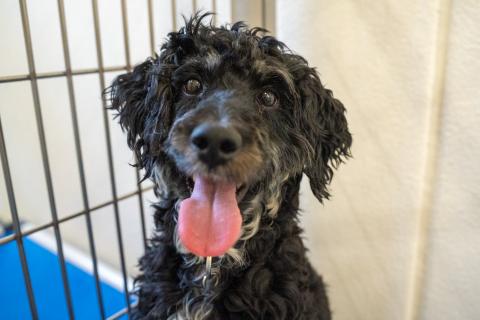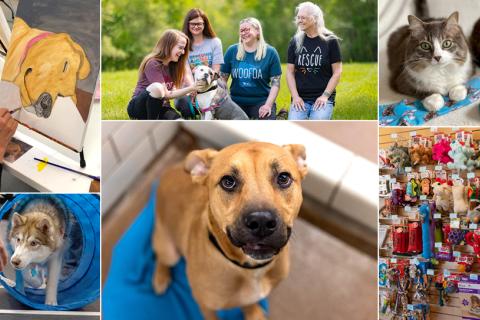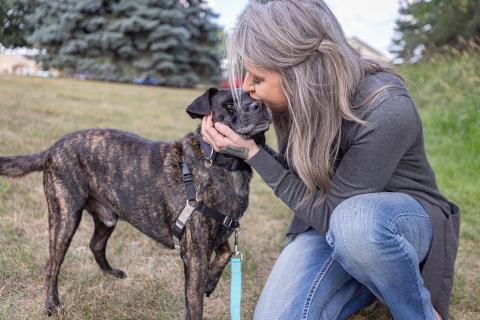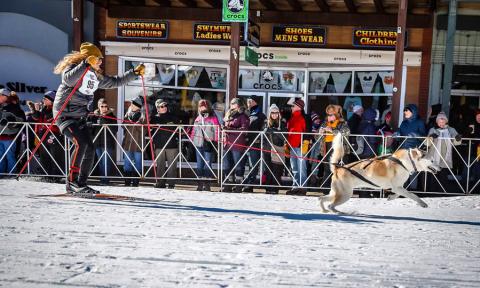
Minnesotans are always looking for new ways to enjoy the long cold winters. What better way than to learn a new winter sport that you can do with your canine companion.
Skijoring is a sport where you are pulled on your cross-country skis by a dog (or multiple dogs, a horse, or a motorized vehicle). But how do you get started in such a sport?
Chloe Adams has been a veterinary technician at Animal Humane Society for five years. She has been skijoring for the past 10 years, and got started after she adopted her Husky mix, Roscoe, from AHS.
She’s sharing her experienced advice to help get you started with this unique sport.
Getting started with skijoring:
About your dog
Any size and breed of dog can technically skijor, but you might have to make adaptations to your speed and distance to make sure they have as much fun as you do.
Common breeds used to skijor are typically larger dogs that love to pull and are not bothered by the snow, such as German Shorthaired Pointers, Hounds, Border Collies, and snow dogs like Huskies, Samoyeds, and Malamutes.
It’s best to talk with your veterinarian about when you should start training your dog to pull. Most people recommend waiting until the age of 1.5-2 years. But you can do lots of things before then -- like teach your dog directional commands and how to pull with a harness.
Equipment
Aside from your normal skiing layers, you’ll need properly fitting skate ski boots, skis, and poles (and the ability to skate ski comfortably).
- A properly fitted dog harness designed for pulling. The X-Back harness is a popular choice. There are other styles of pulling harnesses that can be fit for more unique body shapes like hounds or pit bulls. It’s important to have a properly fitted harness to prevent injury to your four legged- friend.
- A towline designed for mushing that is stretchy and about eight feet long.
- A skijor belt for you to wear that has a quick release.
- If your dog has sensitive paws or you’re skijoring in very cold weather, you may want to consider lightweight booties.
Training
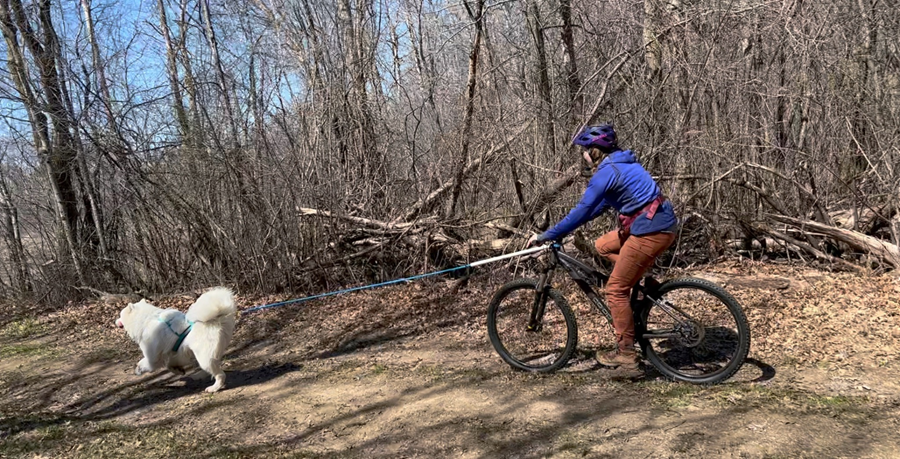
Chloe Adams, AHS Veterinary technician, practicing harness pulling and commands with her 1.5-year-old Samoyed, Ullr.
Before you get on your skis, make sure your dog knows how to start, stop, and turn on command.
Many people use these common mushing terms to direct their dog:
- Hike/Mush/Let's go = start
- Whoa = stop
- Haw = left turn
- Gee = right turn
- On by = ignore what you see and keep running
Let's Skijor!
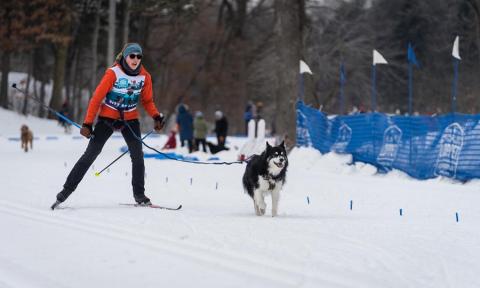
You’ll need a groomed skate ski trail that allows dogs and skijoring. Always double-check because many trails are not dog friendly. Chloe’s favorites around the Twin Cities Metro are the Chain of Lakes, Hiawatha Golf Course, Theodore Wirth natural ski trails, and the Lake Elmo multiuse trail.
Be aware of the weather! Temperatures above freezing will cause the snow to get slushy which will make skijoring harder.
If you are skijoring in temperatures below zero, be sure to monitor your dog’s overall health, especially ice buildup on their paw pads.
Always properly warm your dog up before skijoring. Get their muscles moving before you start and stretch afterwards. Chloe recommends putting their front legs up in the trunk of a car like they are going to jump in, but instead, just hold the position. This will help stretch out your dog’s hind legs.
Start by skijoring short distances. It’s important to slowly build up to longer distances and to leave your active pup wanting more. Most importantly, always make sure your dog is having fun!
Sign up for AHS email
If you found this article helpful and want to read more pet content, sign up for email from AHS. You'll receive behavior tips, stories about adorable, adoptable animals, and more!

